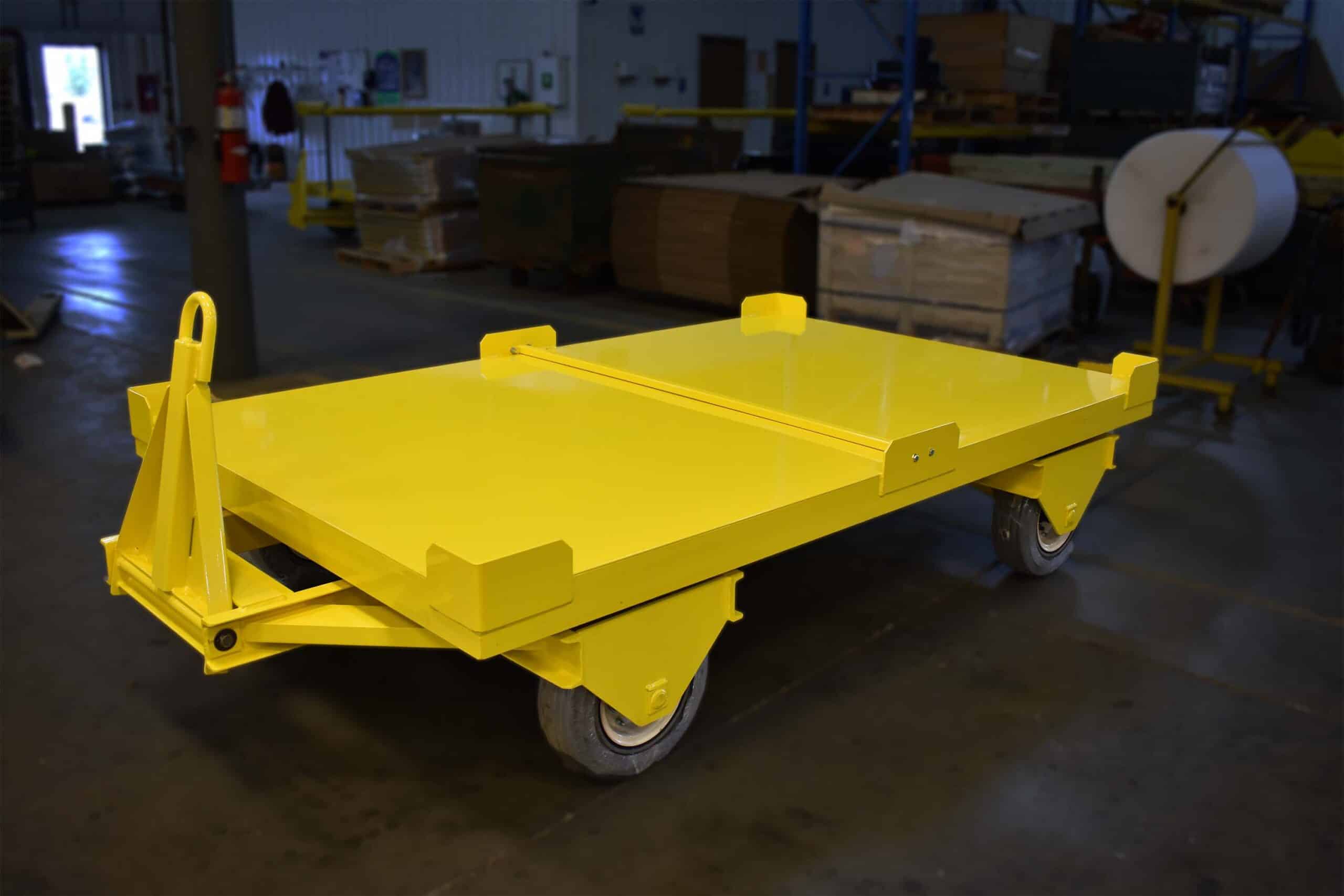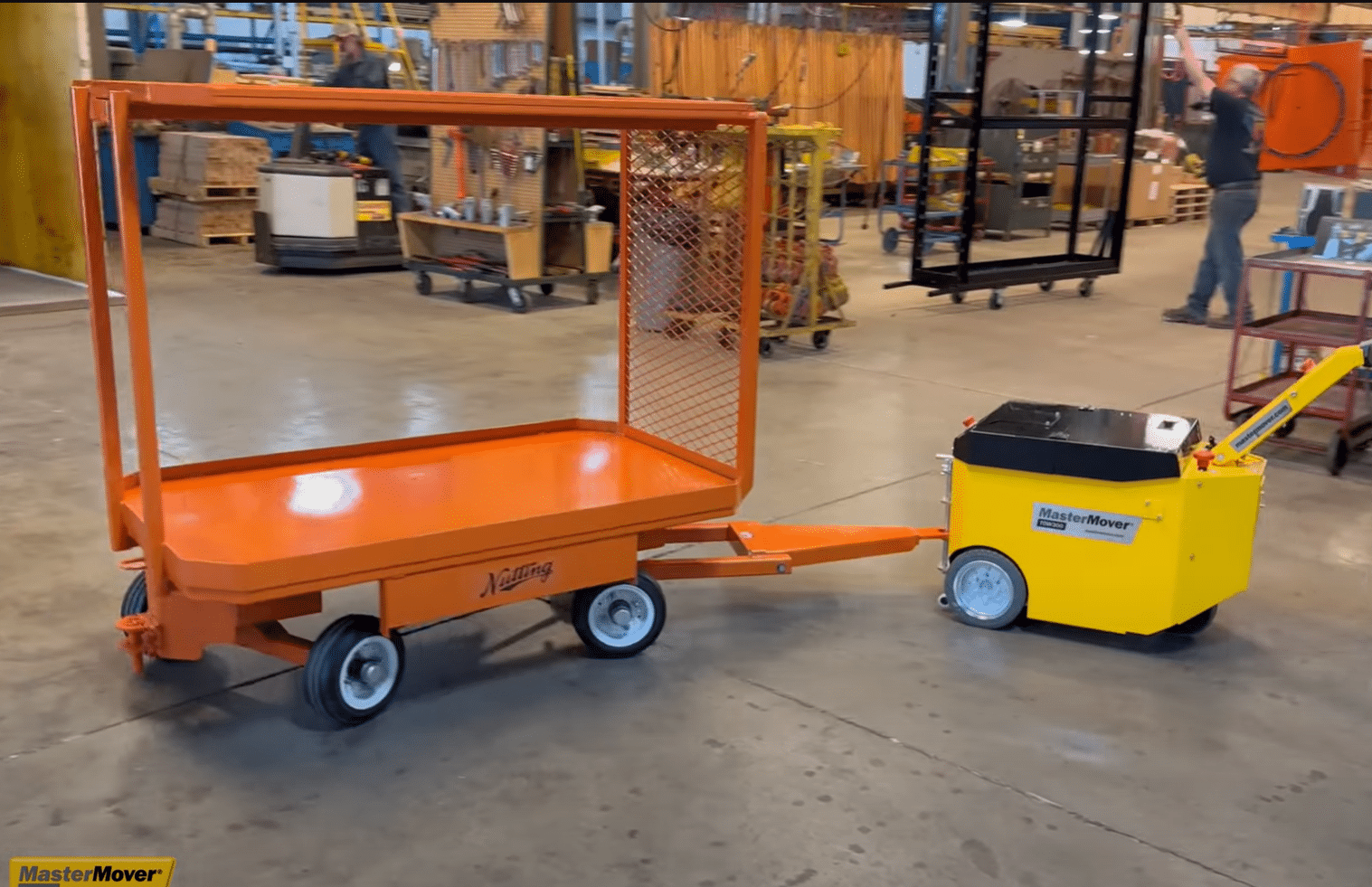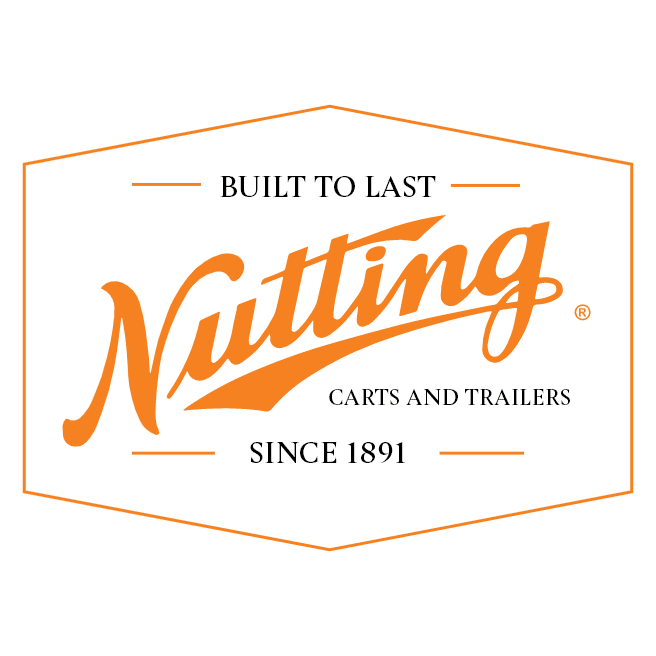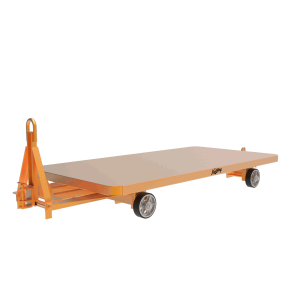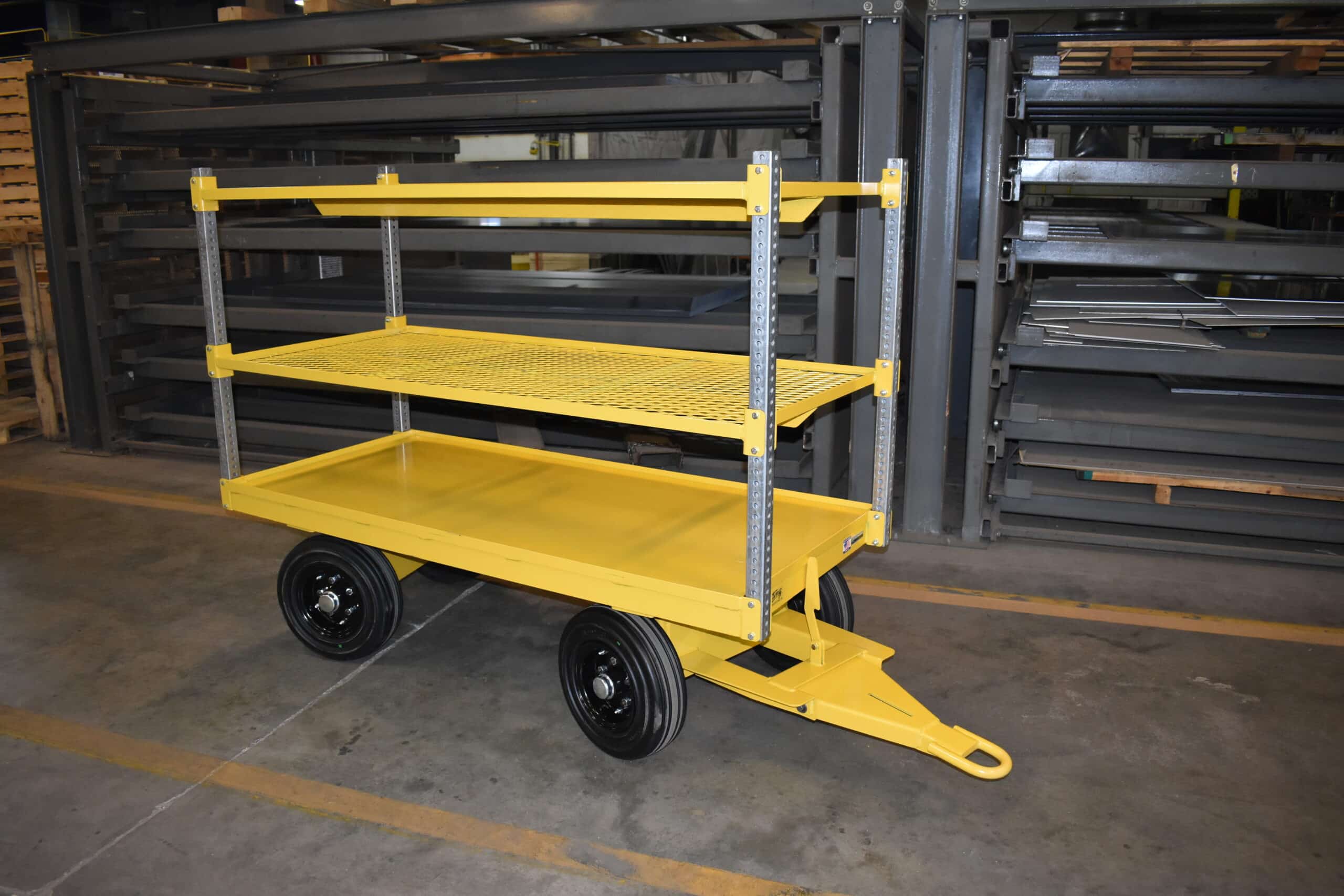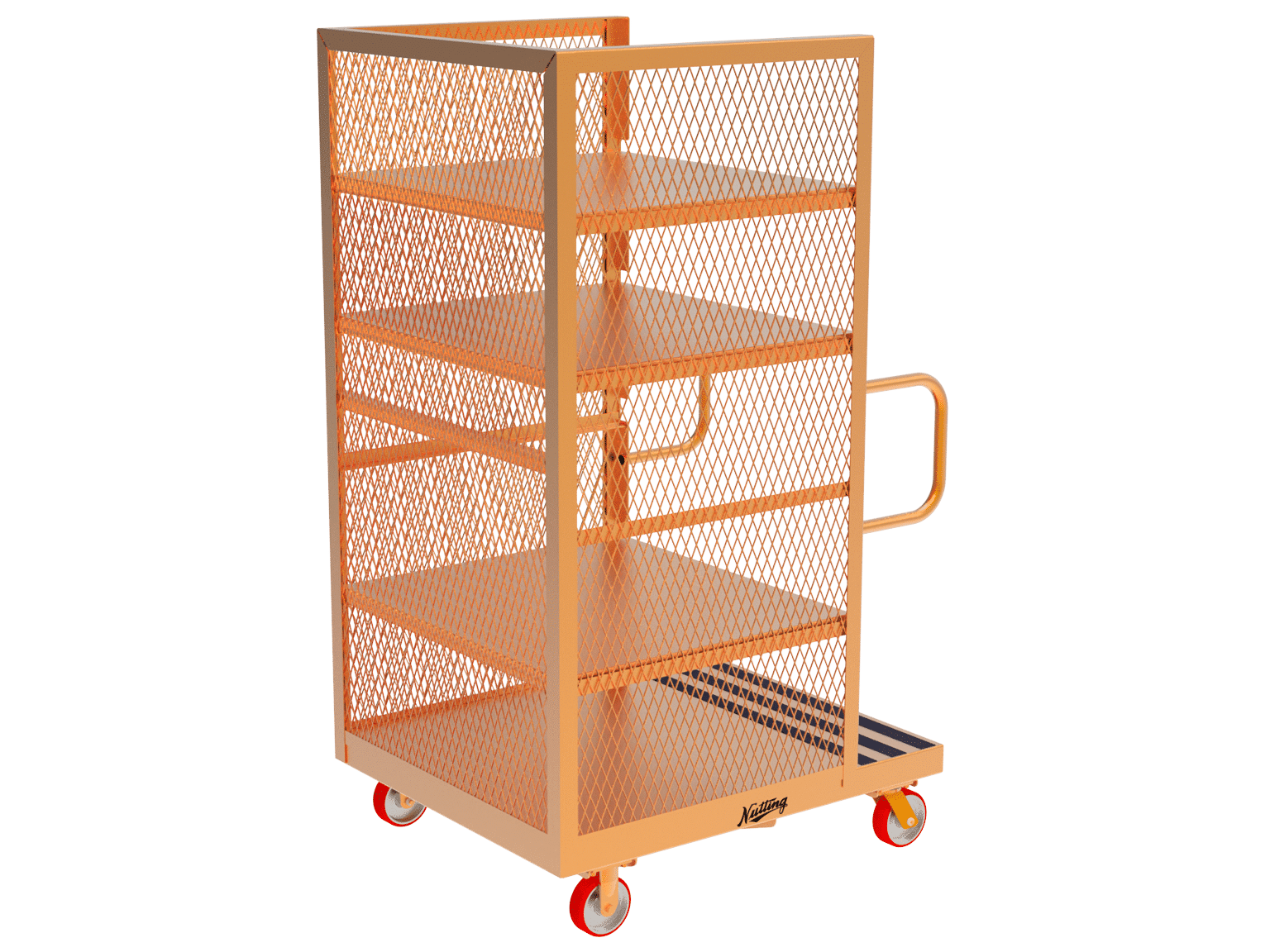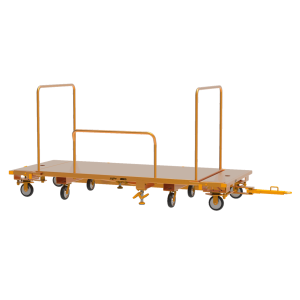Tugger systems can handle a diversity of pallet types, including standard pallets, wood pallets, and skids, making it a cost-effective alternative to forklifts.
For decades, forklifts have been the go-to solution for moving pallets in warehouses, manufacturing plants, and distribution centers. Their ability to lift and transport heavy objects and pallet loads has made them an integral part of material handling processes.
But as your business grows and the volume of pallet shipping increases, it may be time to seek ways to improve efficiency beyond what forklifts can offer. For moving pallets, this means finding solutions that can handle the high throughput and diversity of pallet types, including standard pallets, wood pallets, and skids, without compromising other aspects of operations.
Here’s where tugger systems come into play. Tugger systems are specifically designed to excel in the efficient movement of pallets. Their customizability, ergonomic design, and ability to easily swivel through tight spaces make them the emerging star for all of your pallet needs. Let’s take a closer look at tugger systems and explore how they are reinventing the way businesses handle pallet movement, setting new standards of efficiency and adaptability.
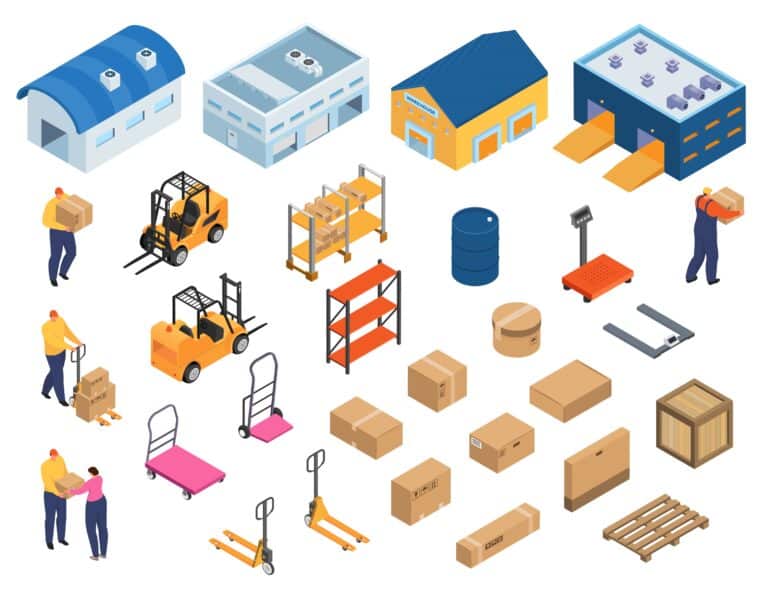
The Time-Tested Role of Forklifts in Material Handling
Forklifts have long served as the backbone of material handling operations, especially when it comes to moving pallets. Along with other machinery like pallet trucks, lift trucks, and pallet jacks, they have made it possible to move and organize heavy pallet loads. Here are a few things forklifts excel at when it comes to pallet handling:
Lifting and Transporting Pallets: Forklifts are primarily used for lifting and transporting pallets stacked with goods. This includes standard pallets, wooden pallets, and various other types.
Pallet Stacker: By enabling operators to stack pallets vertically, forklifts help optimize warehouse space. They are particularly useful in ensuring that pallets are stacked securely and in an organized manner.
Loading and Unloading: Another significant use of forklifts is in the loading and unloading of pallets from trucks and other vehicles, ensuring smooth inbound and outbound logistics.
Handling Specialty Pallets: Sometimes, pallets need to be custom-designed for specific products. Forklifts have been versatile enough to handle these specialty pallets as well.
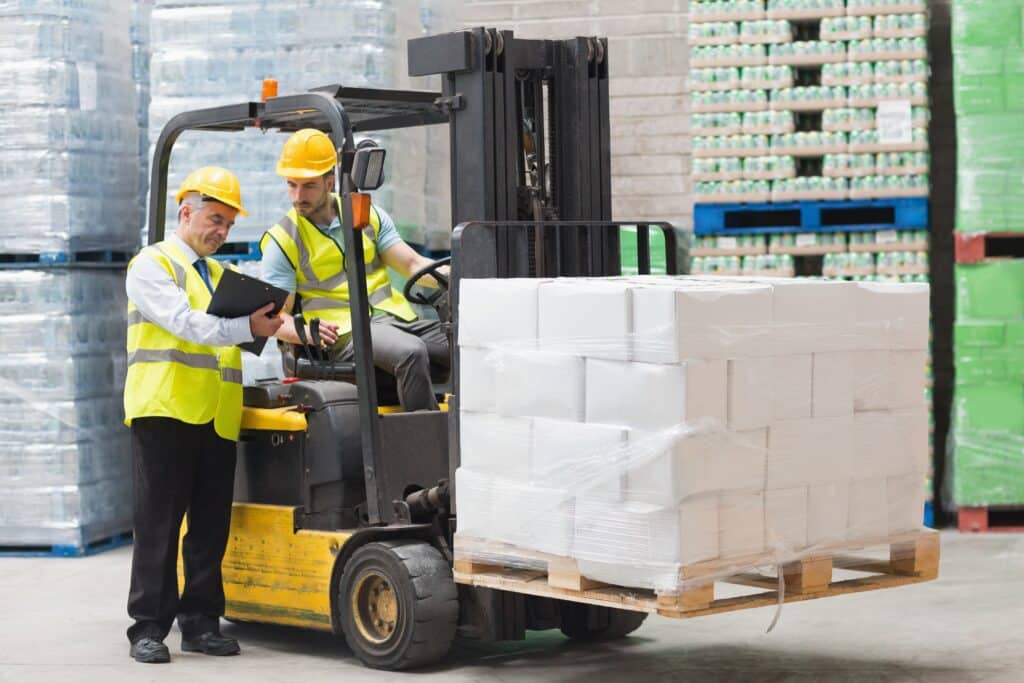
Operational Challenges of Using Forklifts
While forklifts have clearly served material handling facilities well over the years, certain challenges are associated with their use in the warehouse setting, particularly for pallet movement. Here are a few to consider:
Space Utilization: Forklifts often require ample space to maneuver. This can be a limitation in warehouses where aisle space is at a premium, affecting the storage density and layout efficiency.
Safety Concerns: The use of forklifts can pose safety risks. Their relatively large size and the need for precision while handling heavy pallet loads make them prone to accidents, especially in congested areas.
Operational Costs: Maintaining and operating forklifts can be expensive. Fuel or battery costs, maintenance, and the need for specialized operators add to the operational expenses.
Handling Fragile Goods: When handling pallets with delicate or fragile items, the slight bump or imprecise movement of a forklift can result in damages, impacting product quality and customer satisfaction.
Flexibility and Adaptability: As warehouses and distribution centers evolve, the need for equipment that can adapt quickly to different operational needs is essential. Forklifts can sometimes be less adaptable, particularly in environments where rapid changes in pallet handling requirements occur.
These challenges present an opportunity to explore alternative solutions for moving pallets more efficiently and safely. In the next sections, let’s explore a promising alternative that addresses many of these challenges, offering enhanced flexibility and efficiency in pallet movement.
Are Tugger Systems The Future of Material Handling?
Tugger systems are engineered specifically to transport materials, including pallets, with greater ease and efficiency than many current material handling systems. A tugger system typically consists of a motorized tugger unit that pulls multiple trailers or carts. These carts can be customized to suit a variety of pallet sizes and types. Unlike forklifts, tugger systems are designed for continuous flow, streamlining the movement of pallets throughout a facility.
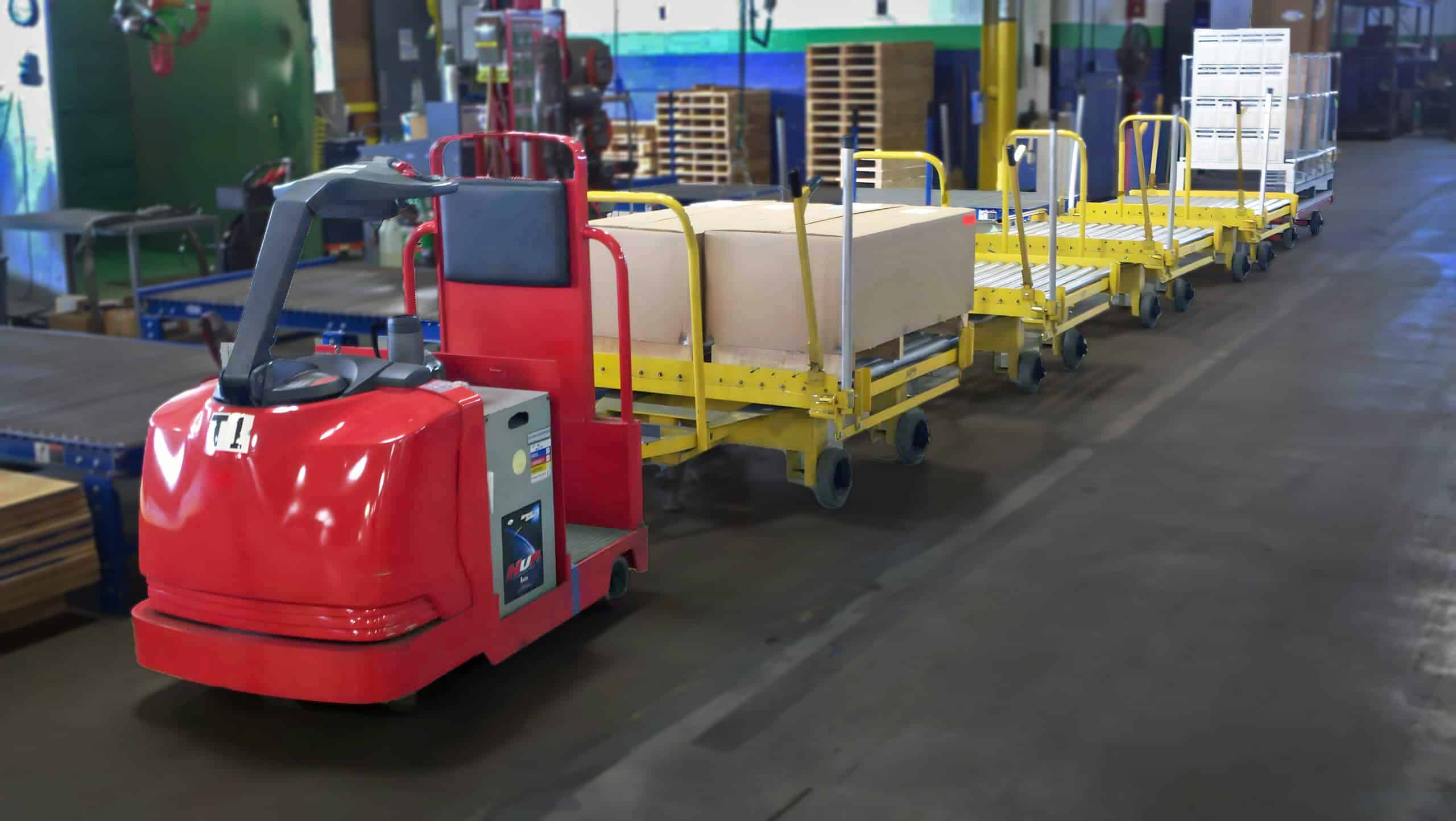
Tugger Systems Can Overcome Some of the Limitations of Forklifts
Enhanced Space Utilization: With their smaller footprint and agility, tugger systems can navigate through narrower aisles and tight spaces, allowing for a more optimized layout in warehouses.
Improved Safety: The design of tugger systems offers better visibility and control. This reduces the risk of accidents, making them a safer alternative for moving pallets, especially in crowded spaces.
Lower Operational Costs: Tugger systems generally require less maintenance and lower energy consumption than forklifts. This translates to cost savings in the long run.
Gentler Handling of Goods: The smoother movement of tugger systems makes them ideal for handling pallets with fragile items, as there is less jostling and potential for damage.
Increased Adaptability: Tugger systems can be easily adapted to handle different types of pallets and can be reconfigured quickly to meet changing operational needs.
For a more comprehensive comparison, our blog “Tugger Systems: The New Forklift Alternative” sheds light on various factors to consider when weighing the options between forklifts and tugger carts for your specific needs.
Achieve Greater Efficiency With Tugger Systems
Increased Throughput: Tugger systems can handle larger volumes of pallets in a single trip compared to forklifts due to their ability to pull multiple carts. This increases throughput and reduces the number of trips needed.
Reduced Downtime: With their continuous flow design, tugger systems minimize downtime, as they do not need to stop as often as forklifts do for loading and unloading.
Ergonomic Advantages: The design of tugger systems is often more ergonomic, reducing the strain on operators and contributing to a more comfortable and productive work environment.
Smarter Workflow Integration: Many tugger systems can be integrated into automated workflows, allowing for more intelligent routing and scheduling, which enhances overall efficiency in moving pallets.
While forklifts have been the traditional choice for moving pallets, tugger systems present a compelling and modern alternative. With their ability to overcome many of the limitations of forklifts and offer enhanced efficiency, safety, and adaptability, tugger systems are poised to become the future of pallet handling in material handling operations.
Breaking Down the Components of Tugger Systems
Tugger systems are comprised of several components that synergize to maximize efficiency. The key components include the tugger unit, which is the motorized vehicle responsible for pulling the carts; the trailers or carts that carry the pallets; and the coupling mechanisms that connect these components.
Tugger Unit: The heart of the system, the tugger unit is equipped with powerful motors that ensure smooth and efficient movement, even with heavy loads.
Trailers/Carts: These are specially designed for handling various pallet types and can be linked together, allowing the transportation of multiple pallets in one go.
Coupling Mechanisms: These are essential for quickly attaching or detaching trailers or carts, ensuring flexibility and ease of use.
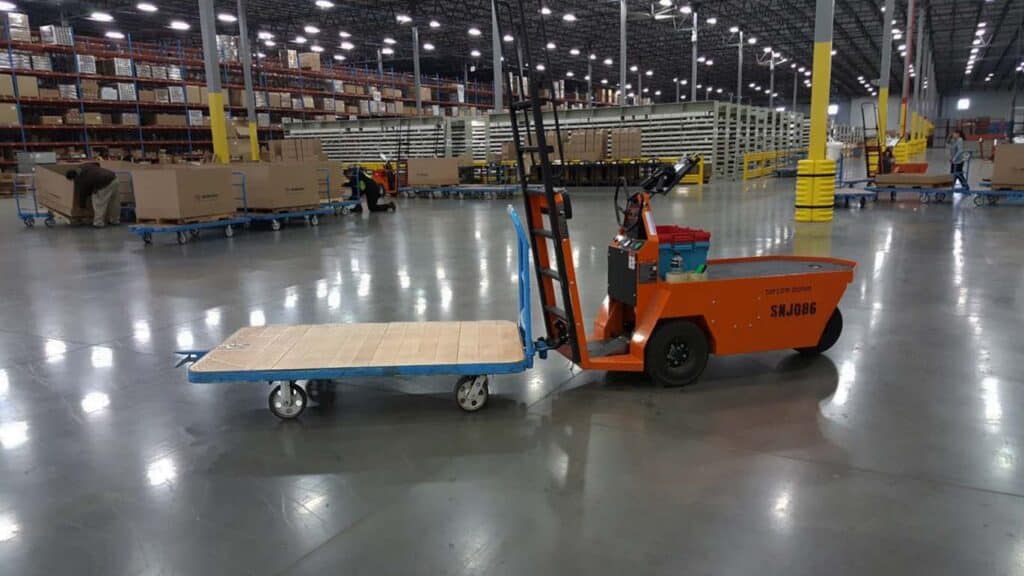
Understanding Load Capacity and Adaptability in Tugger Systems
Load capacity is a critical aspect of tugger systems. It’s important to understand how much weight the system can handle without compromising efficiency or safety. Adaptability is also key; the ability to handle various pallet types, including standard pallets, wooden pallets, and custom pallets, is essential.
Load Capacity: Heavy-duty tugger systems often have a higher cumulative load capacity compared to forklifts because they can pull multiple carts simultaneously.
Adaptability: The versatility of tugger systems allows them to easily adapt to different tasks and environments.
The Customizability of Tugger Systems for Diverse Material Handling Needs
Customizability is one of the tugger systems’ standout features. Whether it’s modifying the carts to handle unique pallet sizes, integrating automated systems, or adjusting configurations to suit specific workflows, tugger systems can be tailored to meet a wide range of material handling requirements.
Custom Carts and Trailers: These can be designed to suit specific pallet handling needs, ensuring optimal use of space and handling efficiency.
Integration with Automation: Some tugger systems can be integrated with automation technologies, adding intelligence to material handling.
Real-World Scenarios- Tugger Systems in Action
Automotive Manufacturing Industry: In the automotive manufacturing industry, adopting tugger systems has proven to be a catalyst for change in handling pallets loaded with parts and components. With their nimble design and the ability to transport multiple pallets at once, tugger systems have significantly reduced the time taken to move materials within facilities. Their compact structure has also enabled more organized and streamlined warehouse layouts.
E-Commerce Fulfillment Industry: For e-commerce fulfillment centers, efficiency in handling high volumes of palletized goods is important. By integrating tugger systems into their material handling processes, these centers are able to significantly increase their capacity to move pallets. The agility and ability to handle multiple pallets simultaneously have resulted in a quicker picking and packing process, and the stable movement of tugger systems has led to a reduction in damaged goods, ensuring that products reach customers in excellent condition.
Food and Beverage Distribution Industry: When it comes to the food and beverage distribution industry, timeliness and efficiency in handling pallets loaded with perishable goods are integral to the operation. Tugger systems, with their rapid and proficient movement, have become an essential tool in ensuring that products are promptly transported to refrigerated storage areas, minimizing spoilage and waste. The capability of tugger systems to safely handle heavy loads also ensures that products are transported without damage, maintaining quality and reducing losses.
Find the Right Tugger System for Your Operations
Here are a few considerations for when you start to explore different tugger systems for your operations:
Load Capacity and Configuration: Evaluate the load capacity requirements for the pallets you’ll be moving. Choose a tugger system that can handle your heaviest loads and offers flexibility for various configurations.
Customizability: Look for tugger systems that offer customization options. This ensures that the system can be tailored to meet the specific needs of your operations, whether that involves moving standard pallets, oversized items, or a combination.
Vendor Reputation and Support: Select a vendor with a solid reputation for quality and customer service. Ensure that they offer support for installation, training, and ongoing maintenance.
Budget and ROI Analysis: Balance your budget constraints with an analysis of the expected return on investment. A more expensive tugger system may offer features that result in significant long-term savings.
Nutting’s tugger carts are expertly designed to maximize space, enhance safety, and reduce operational costs. With versatile configurations and robust construction, our carts are tailored to meet the diverse needs of modern warehouses. Ready to revolutionize your material handling? Contact us today to learn how Nutting’s tugger cart solutions can change the game for your operations.

